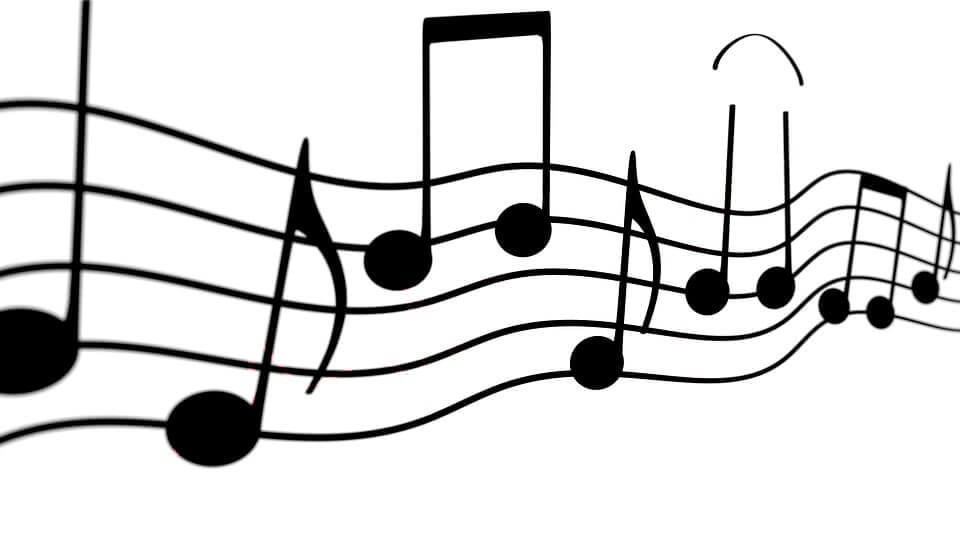Think about your favorite track.
What part of it comes through in your memory? The chord progression? The bassline? It is probably the melody.
Melody in music is the most memorable and essential part of a track. However, they are additionally the hardest to write.
Coming up with good melodies is challenging because it seems like everything has already been completed before. Do not worry, it’s simply not true.
There is a universe of incredible new melodies out there waiting to be written. You just must know the theory and do the work to search out them.
Right now, I will show you what melody in music is, why they stick in your mind and the tools you should write them.
The sultry string orchestra intro in Etta James’ “At Last” is another good instrumental melody:
The intro guitar melody of Wye Oak’s “The Louder I Call The Faster It Runs” is also a catchy line:
2. Vocal melodies
In terms of popular music, nothing is more defining than vocal melodies.
All aspects of music could connect with listeners, however, vocals are the most human and relatable parts of tracks.
Covered here by Israel “IZ” Kamakawiwoʻole, “Somewhere Over The Rainbow” features one of the most hauntingly beautiful vocal melodies in music:
The vocal melody in Vagabon’s “Fear and Force” is one other good instance:
Now that what melodies are, how do you come up with your own good ones?
How to write great melodies
Here are Three essential ideas for writing melodies:
1. Begin by singing or playing over a simple chord progression
Select two basic major chords like C or F.
Play your chords on an instrument such as a guitar or piano, or plug them into your DAW’s piano roll and loop them again and again with a nice synth VST.
Then, either sing or play your instrument with the purpose of writing a melody in music. Ensure that your basic recording device is ready to capture what you come up with during the melody making process.

When you are a vocalist, think about beginning out your process by singing gibberish.
Yep, you read that right. Although it may freak out you are neighbors, crafting a vocal melody from scratch is greatest done without any predetermined rules or boundaries to limit yourself with like lyrics.
Experiment with the same looped chords long enough, and you will soon discover that gibberish soon takes shape into words, phrases, and fleshed out melodies.
2. Breathe life into your melodies with interesting rhythmic stressing and accents
Tame Impala’s Elephant is proof of how catchy rhythms could make otherwise bland melodies memorable.
The core of the verse is made up of only 2 notes. However, with using syncopation it manages to stay catchy and memorable.
Even the only melody can profit from using surprising or off-beat rhythms.
When you are writing a complex melody that still sounds “meh,” try simplifying and experiment with how your notes are presented rhythmically.
Get adventurous here by shifting the way your notes fall—from directly on strong beats to landing between them.
When you discover your melodies always begin on the beat of 1, try having them start either shortly before or after. Even a minor change in rhythm could transform a melody in a subtle but massive method.
3. Pay close attention to your melodic contour
Melodic contour is the overall shape of the line that your melody traces because it moves up and down.
Melodic lines could move in a few different ways.
Motion by step (or stepwise motion) is when a melody moves by consectective notes in the scale.
Motion by skip is once a melody moves by intervals of bigger than a 2nd.
Two many large leaps in a row are harder to connect as a single melodic unit. And a melody comprised of only stepwise motion is usually not very fascinating for the listener.
Attempt to balance the number of steps and skips so that your melody stays fresh and thrilling
Hot tip: It’s simpler to use bigger skips in your melodies when you fill them in at least partially by step in the opposite direction.
When you are able to, write out the melodies you are writing via music notation on paper. When you are in your DAW, there is often a method to transform MIDI pitches into music notation.
If the gap between the notes of your melodies looks small, then it is safe to assume your melody will not build a narrative and sound compelling.
One of the causes “Somewhere Over The Rainbow” is such a phenomenal melody in music is as a result of it opens with a big major 7th interval. In case your melodies are literally and musically falling flat, attempt increasing them into mountains.
4. Outline the harmony where possible
Melody does not exist in a vacuum. There is always a vital balance between your melody and its underlying harmony.
Lots of the greatest melodies of all time get their energy from the way they gracefully mix with the harmony of the track.
Keep in mind that the chord tones (scale degrees 1,3,5,7) are the most effective and stable places to land.
Pay attention to the way you weave your melody from one chord tone to the next as your harmony grows is important for good melody writing.
Try, try, and try again

If you find yourself working hard to write melodies without much success, just keep in mind that there’s a whole lot of other musicians in your shoes.
The world’s greatest songwriters did not wake up one morning with the ability to craft good melodies. They worked at it, attempting and failing again and again till they began to get it right.
Approaching melody-writing with an experimental attitude free of expectations provides you the best opportunity at creating something your audiences will resonate with.

